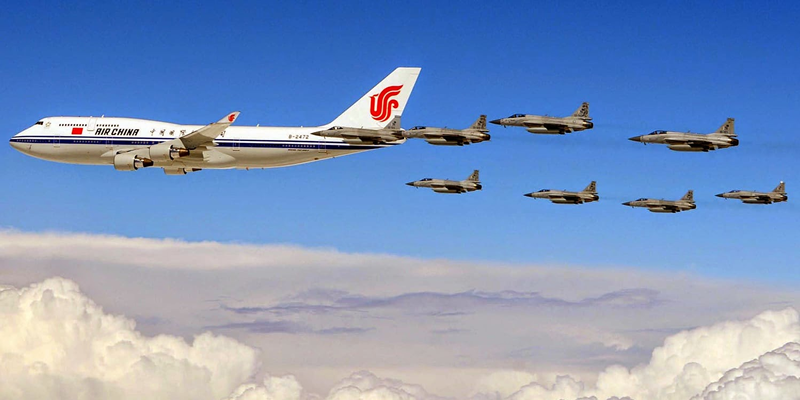We are honored to present this multi-part paper from Andrew Korybko into the emerging New Cold War between China and India. This research will be released over a number of days to facilitate discussion and conversation, with a compiled briefing paper being provided at the end of the series.
Theoretical Background
Relations between China and India have been souring over the past year since New Delhi agreed to an unprecedented military-strategic partnership last summer with Washington through LEMOA. The US long planned to use India as its “Lead from Behind” proxy in countering China, hoping to set the two Asian Great Powers against one in the ultimate divide-and-rule strategy of the 21st century.
Just as Washington courted Beijing against Moscow in the Old Cold War, it has revised the strategy with New Delhi against Beijing in the New Cold War. This policy has been largely successful through the US exploiting the Modi-Doval-Hindutva Deep State’s obsessive fear and paranoia over China and Pakistan turning India into the unipolar vanguard against the China-Pakistan Economic Corridor (CPEC), and accordingly, the rest of Beijing’s One Belt One Road (OBOR) global vision of New Silk Road connectivity.
The Indian-Japanese Alliance Against China
India recently announced that it opposes both game-changing ventures on supposed sovereignty violations, relying on a maximalist approach to the Kashmir conflict to “justify” this position. This amounts a declaration of strategic war against China, which in turn can be seen in hindsight as formalizing the New Cold War between them. This indirect competition for influence began to unfold in 2015 and was responsible for the dynamic events which occurred in Nepal, Myanmar, Sri Lanka, and the Maldives at that time, but it now takes a qualitatively different form because India is also teaming up with Japan in order to boost the effectiveness of its efforts.
The two anti-Chinese states have joined forces to develop the “Freedom Corridor,” a Japanese-assisted expansion of India’s proposed “Cotton Road” all across the Indo-Pacific Rimland of Afro-Eurasia, and rival China’s New Silk Road. The name – the “Freedom Corridor” – evokes the type of language commonly employed by the US, further signifying this initiative is in reality an American-inspired proxy strategy for the 21st century. In fact, the Chinese-Indian New Cold War in Afro-Eurasia is a major part of the global New Cold War playing out between the multipolar and unipolar worlds, respectively, but instead of being fought over ideology like the previous one in the last century, this rivalry is over connectivity corridors.
The Significance Of CPEC
The multipolar forces want to break through the stranglehold the US and its allies have over trade routes, while the unipolar ones want to reinforce this state of affairs in order to perpetuate their global systemic dominance. CPEC is the spine of the emerging Multipolar World Order, precisely because it allows China to acquire a reliable non-Malacca access route to the Indian Ocean, and from there to the European, Mideast, and increasingly, African marketplaces. There are, of course, other Silk Roads being built, notably the overland routes that China wants to construct to the Mideast and EU by means of Central Asia and Russia, respectively, but these are very vulnerable to the Hybrid War template of externally provoked identity conflict in the geostrategic transit states.
With CPEC, however, there’s only one transit state to go through and it’s a nuclear-equipped and militarily powerful one, which single-handedly defeated terrorism through the legendary Operation Zarb-e-Azb, hence Beijing’s focus most of its efforts on prioritizing this route above all others, making it the top target of the US’ destabilization efforts against OBOR.
This part of the New Cold War and its related Chinese-Indian component were comprehensively examined by the author in a series of articles enumerated in his 2017 forecast for South Asia and a video interview given late last year on this topic.
Readers should refer to these two sources, if they’re interested in learning more about this.

The Chinese-Indian New Cold War
Andrew is an American Moscow-based political analyst specialising in the relationship between the US strategy in Afro-Eurasia, China’s One Belt One Road global vision of New Silk Road connectivity, and Hybrid Warfare.







